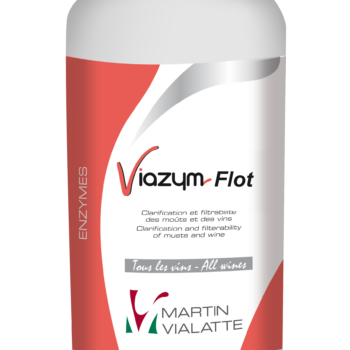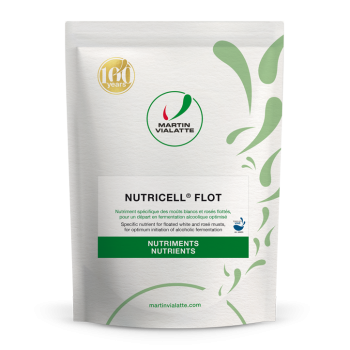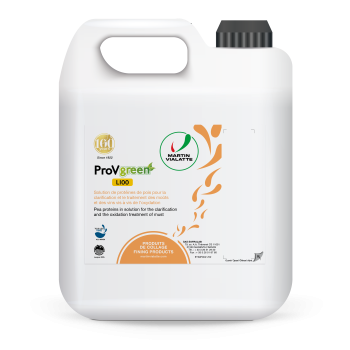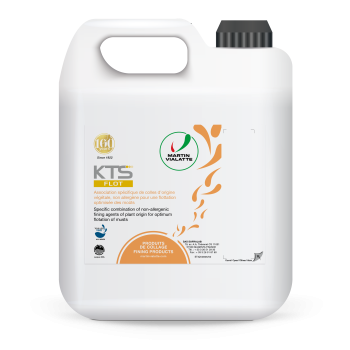FLOTATION: AN ANCIENT PRACTICE
Flotation has existed for over 2000 years. It is a separation technique based on the difference in hydrophobicity of the surfaces of the particles to be separated. Commonly used in mineral processing for separating different types of mineral and in waste water treatment for removing fats, this traditional technique has proven itself over time. Flotation was first used in wine-making in 1987. Today, it is often used in wine cellars and is highly suitable for musts with a high content of must deposits. This practice thus allows the clarification process to be automated, with a very rapid separation of the solid and liquid phases.
HOW TO ENSURE A SUCCESSFUL FLOTATION?
For many years, MARTIN VIALATTE® has worked on the formulation and application of specific products for flotation processes. Which ones are used, the dose applied and how
they are combined are crucial elements.
1) The prior addition of enzymes to musts is necessary to ensure the flotation process proceeds correctly. This leads to a reduction in viscosity and the formation of charged pectin particles that react with fining agents.
2) Plant-based protein fining agents are very effective at flocculating suspended particles and forming the required flocs that are then transported to the top of the vat by the injected gas.
3) As in static clarification, bentonite facilitates the flocculation of all the plantbased fining agent. Studies need to be carried out on must turbidity and nutrition with the aim of combining effective clarification with good alcoholic fermentation.




